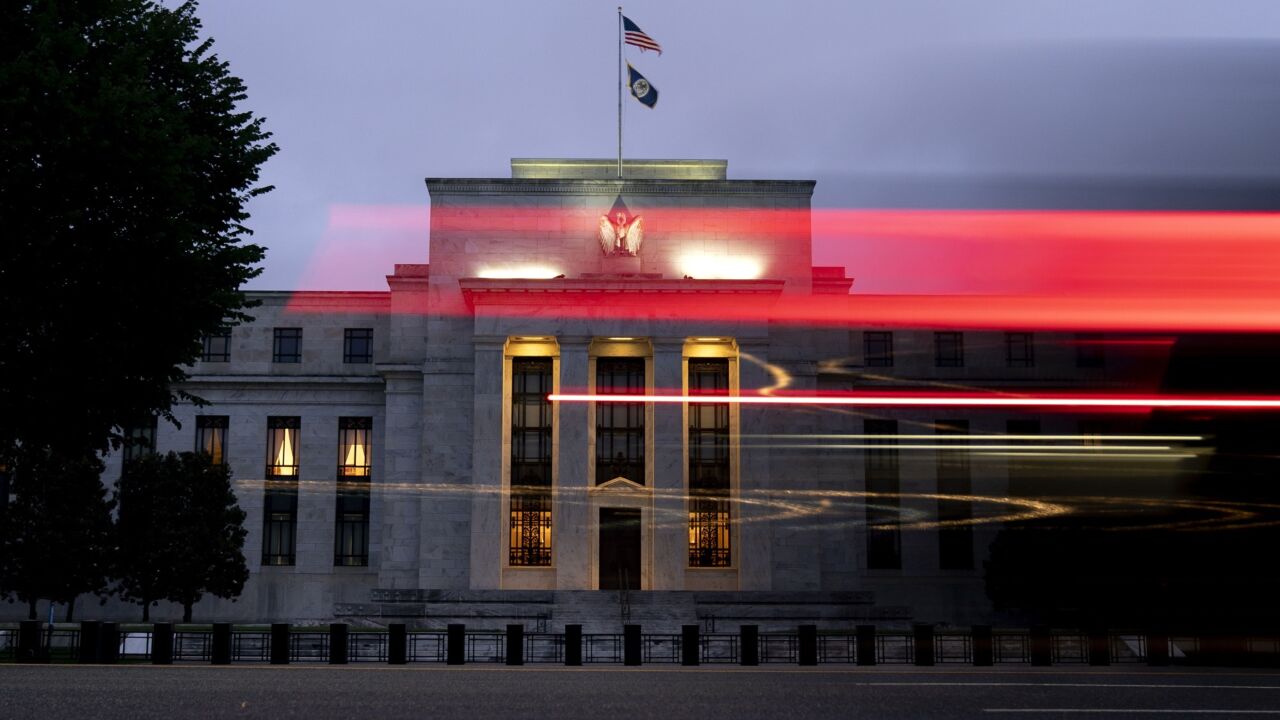-
Treasuries fell, extending a selloff in government securities that has rapidly pushed up yields over the past month and threatens to undercut the economy by driving up borrowing costs.
October 6 -
Heinel contends that the Fed is done with its hiking cycle and that policy is restrictive enough. On this basis, she forecasts the U.S. economic growth slowing to 1.1% next year, with the inflation rate moderating to just below 3%.
October 3 -
After the salvo of central bank decisions last week, traders are increasingly concerned that rising oil prices risk fanning inflation, which will make it difficult for policymakers to reduce rates anytime soon.
September 25 -
Analysts look at whether the FOMC will bring the last rate hike in the cycle, whether recession is coming, and whether the Fed is making a policy mistake.
July 24 -
Once it is free to issue new debt, the Treasury Department is expected to quickly replenish its general account at the Fed. The move could lead to a shortage of reserves.
May 30 -
The Federal Reserve Board governor said secular increases to the currency supply limits how much the central bank can shrink its holdings.
May 24 -
The Federal Reserve Chair urged Congress to raise the debt ceiling, warning the impacts of not doing so could go beyond the central bank's ability to mitigate.
February 1 -
Speaking at an event hosted by the Council on Foreign Relations, Federal Reserve Gov. Christopher Waller said the Federal Reserve has a long runway for its balance sheet reduction.
January 20 -
In a speech delivered Thursday afternoon, the Federal Reserve's vice chair said she does not see a wage-price spiral driving inflation, but rather a "price-price spiral."
January 19 -
The Federal Reserve raised its benchmark interest rate by half a percent this week, but chair Jerome Powell said the question now is how long to keep monetary policy tight.
December 14 -
Federal Reserve Chair Jerome Powell said that interest rates could climb less quickly as early as December, but warned that cutting rates "is not something we want to do soon."
November 30 -
The Federal Reserve notched two badly needed wins last week, as inflation showed signs of easing and the financial system withstood the collapse of one of the world's biggest crypto firms. Here's what that means for the central bank moving forward.
November 14 -
The Federal Reserve's semiannual financial stability report said the threat of continued high prices and the Fed's response to them are top threats for banks and other market participants.
November 4 -
In a letter to Federal Reserve Chair Jerome Powell, the chair of the Senate Banking Committee warned that the Fed was in danger of going too far in its efforts to tame inflation.
October 25 -
The central bank has recently stepped up its efforts to reduce its balance sheet, but doing that without forcing a liquidity crunch requires careful planning.
October 11 -
Comments from Federal Reserve officials in Jackson Hole last week have markets bracing for further tightening of monetary policy in the near term.
September 1 -
As the Federal Reserve implemented its second 0.75% rate hike in two months, the chair said the system is able to withstand any financial stability risks that rising rates might create.
July 27 -
As government debt swells, the outer limits of what the U.S. can safely borrow are becoming less and less clear.
-
The dot plot will be the star of the meeting, but the coronavirus and the elections will be part of the discussion, economists say.
September 11 -
Federal Reserve Chair Jerome Powell announced a new approach to monetary policy Thursday that takes a more relaxed stance on inflation and on its view of how low U.S. unemployment can go.
August 27

















